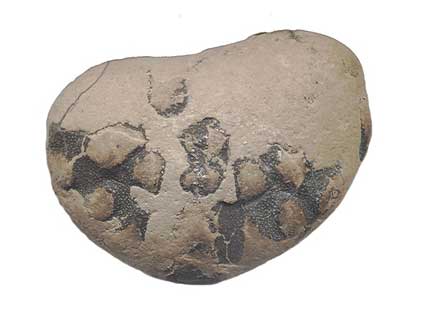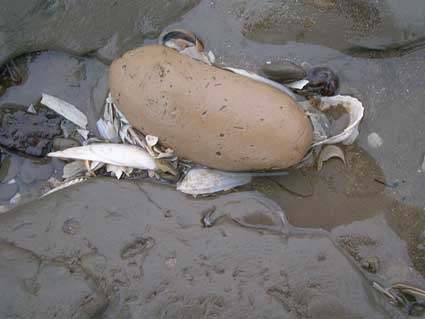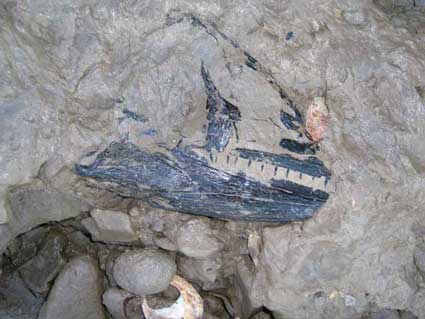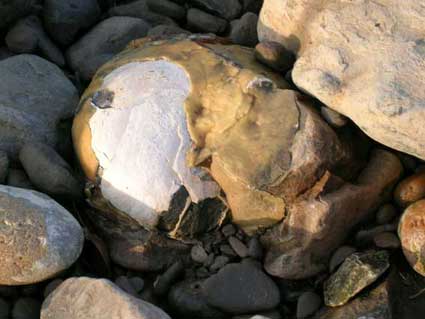 |
||
|
Searching
for larger fossils in the form of phosphatic nodules or even larger
ones in septaria. Phosphatic nodules are distibuted erratically throughout
the clay with no defined stratigraphy to help the collector find specimens.
They wash out onto the beach and accumulate with stones of the same
size or weight. Specific gravity is the clue as to the where to look.
Except this rule does not always apply as they can be lodged against
larger stones or in gullies. Most nodules will not have a fossil inside.
The ones that do are easily identifiable as the black bone or carapace
looks like what it is. Larger fossils like nautili, fish and turtles
are very rare but can be found if one is very lucky.
|
||
 |
|
 |
|
Phosphatic
nodule right with 'no one at home' euphemism for it being unfossiliferous,
the one on the left shows a typical beach found nodule with a Zanthopsis
crab encased. Surplus matrix can be pared away with a scalpel or airpen.
Do not try to acid prep as the fossil and matrix are the same chemically.
|
||
 |
|
 |
|
Septaria
showing calcite lined chambers with a Baryte rose as commonly found
along the section
|
Nautilus
as found on the beach
|
|
 |
|
|
|
Fish
skull emerging from the clay slip at the top of the beach
|
Nautilus
still encased in calcite. They are usually broken out of the large septaria
|
|
.jpg) |
||
Above is the rather worn skull of a fish. it is so badly damaged that it is impossible to identify. compare it with the 'fish washing out of the clay slip above to see the bony detail that has been lost |
||


